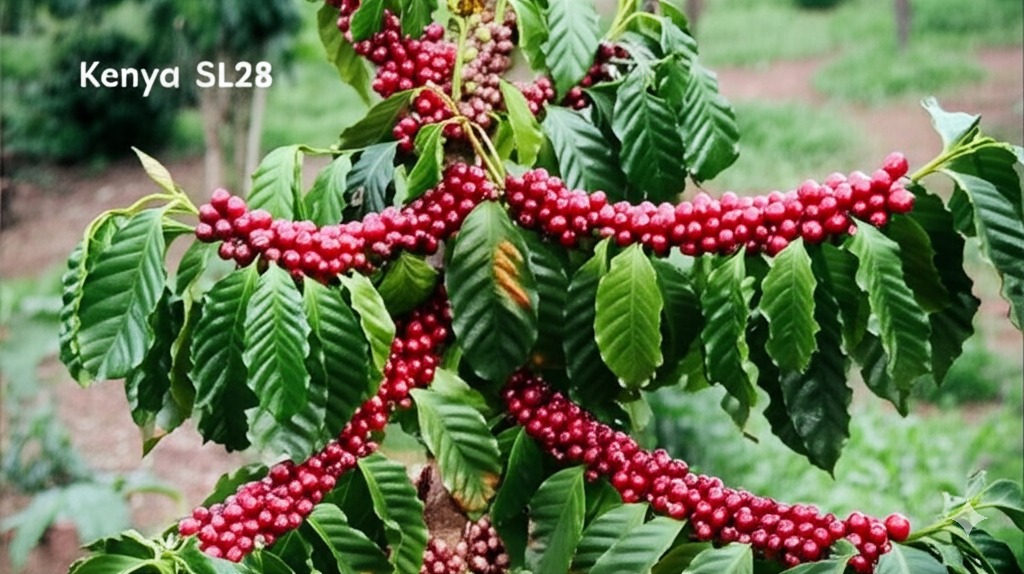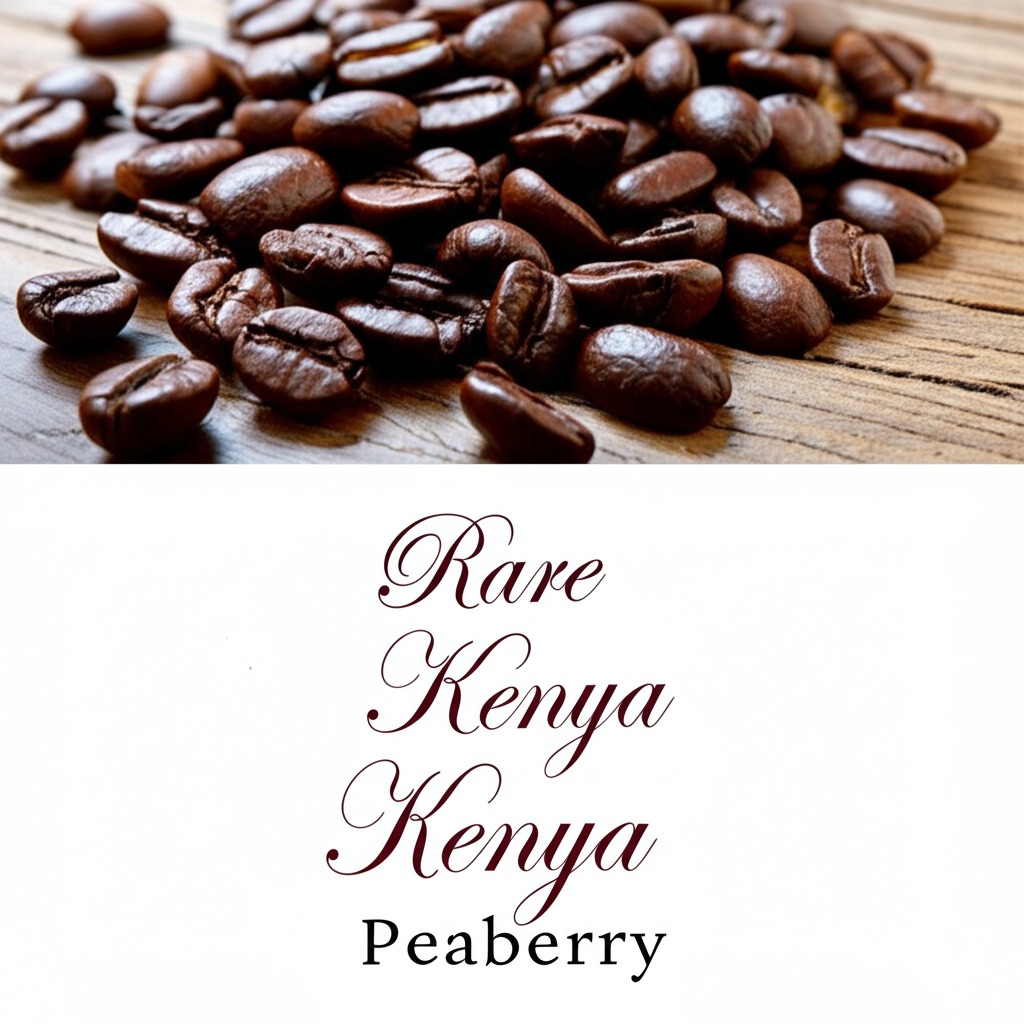กาแฟเคนยา 10 อันดับแรกที่คุณต้องลองคืออะไร?
กาแฟเคนยามักจะผิดหวังด้วยคุณภาพที่ไม่สอดคล้องกันและตัวเลือกที่สับสน ฉันเสียเงินไปกับถั่ว subpar ที่สัญญาความเป็นเลิศ แต่ส่งมอบคนธรรมดา
เคนยาผลิตกาแฟที่ดีที่สุดในโลกซึ่งเป็นที่รู้จักกันดีในเรื่องความเป็นกรดและผลไม้ที่สดใส กาแฟเคนยาชั้นนำมาจากภูมิภาคเช่น Nyeri, Kirinyaga และ Mt. Kenya โดยมีถั่วให้คะแนน AA, AB หรือ PB ตามขนาดและคุณภาพ

เมื่อฉันไปเยี่ยมชมฟาร์มกาแฟของเคนยาเป็นครั้งแรกฉันรู้สึกประหลาดใจกับความระมัดระวังในทุกขั้นตอน จากการคัดเลือกมือเลือกไปจนถึงการประมวลผลอย่างพิถีพิถันเกษตรกรชาวเคนยาปฏิบัติต่อกาแฟเป็นรูปแบบศิลปะ ให้ฉันแบ่งปันกาแฟเคนยาที่ดีที่สุด 10 แห่งที่ฉันค้นพบมานานหลายปีของการชิมและทำงานร่วมกับผู้ผลิตในท้องถิ่น
อะไรทำให้กาแฟ Kenyan AA พิเศษมาก?
กาแฟเคนยา AA มักจะมีค่าใช้จ่ายมากกว่าสายพันธุ์อื่น ๆ คนรักกาแฟหลายคนสงสัยว่าราคาพรีเมี่ยมให้รสชาติที่เหนือกว่าหรือไม่หรือเป็นเพียงการตลาดที่ฉลาด
เคนยา AA แสดงถึงกาแฟเคนยาเกรดสูงสุดที่มีถั่วขนาดใหญ่ (ขนาดหน้าจอ 17/18) ที่มีความซับซ้อนของรสชาติที่เข้มข้น ถั่วเหล่านี้เติบโตที่ระดับความสูงสูง (1,700-1,800 เมตร) ซึ่งการเจริญเติบโตช้าลงพัฒนาน้ำตาลเข้มข้นสร้างความเป็นกรดสดใสด้วยแบล็คเคอแรนท์ส้มและโน้ตเหมือนไวน์

เมื่อฉันพบกาแฟเคนยา AA ครั้งแรกฉันรู้สึกถึงความสมดุลและความเป็นกรดที่น่าทึ่ง ระบบการให้เกรดในเคนยานั้นมีขนาดใหญ่เป็นหลัก แต่มีเรื่องราวมากกว่านี้ ถั่ว AA ไม่ได้มีขนาดใหญ่กว่าทางร่างกายเท่านั้น - โดยทั่วไปแล้วพวกเขามักจะมาจากศูนย์กลางของเชอร์รี่กาแฟที่มีความเข้มข้นของสารอาหารสูงที่สุด ส่งผลให้เกิดการพัฒนารสชาติที่ซับซ้อนมากขึ้นในระหว่างการคั่ว
The best Kenya AA coffees come from specific regions like Nyeri and Kirinyaga, where volcanic soils and ideal microclimates create distinctive flavor profiles. Some notable AA varieties include "Kenya AA Nyeri" with its blackcurrant and citrus notes, and "Kenya AA Kirinyaga" เป็นที่รู้จักสำหรับลักษณะดอกไม้และเบอร์รี่มากขึ้น
สิ่งที่หลายคนไม่ได้ตระหนักคือการผลิตเบียร์ที่เหมาะสมเป็นสิ่งสำคัญที่จะได้สัมผัสกับศักยภาพอย่างเต็มที่ของเคนยา AA ฉันขอแนะนำวิธีการเทที่อุณหภูมิ 200-205 ° F ด้วยการบดขนาดกลางเพื่อสกัดความสมดุลที่สมบูรณ์แบบของความเป็นกรดและความหวานที่ทำให้ถั่วเหล่านี้มีชื่อเสียงระดับโลก
ทำไมเคนยา SL28 จึงได้รับการพิจารณาในหมู่กาแฟที่ดีที่สุด?
ผู้ที่ชื่นชอบกาแฟมักพบว่าชื่อหลากหลายของเคนยาสับสน SL28 ฟังดูเหมือนรหัสวิทยาศาสตร์มากกว่ากาแฟพรีเมี่ยมทำให้หลายคนสงสัยว่าอะไรทำให้มันพิเศษ
Kenya SL28 เป็นกาแฟหลากหลายที่พัฒนาโดย Scott Laboratories ในช่วงทศวรรษที่ 1930 ซึ่งได้รับรางวัลสำหรับการต่อต้านภัยแล้งที่ยอดเยี่ยมและรสชาติที่โดดเด่น มันผลิตถั่วที่มีความเป็นกรดที่ซับซ้อนความหวานเด่นชัดและแบล็คเคอแรนท์ไวน์และโน้ตผลไม้เขตร้อนที่กลายเป็นเครื่องหมายรับรองคุณภาพของกาแฟเคนยาพรีเมี่ยม

เรื่องราวเบื้องหลัง SL28 ทำให้ฉันหลงใหลมากที่สุด ความหลากหลายนี้ไม่ได้ถูกสร้างขึ้นโดยบังเอิญ - ได้รับการคัดเลือกโดยเฉพาะสำหรับสภาพการเติบโตของเคนยาจากโรงงานกาแฟสายเลือดบูร์บอง สิ่งที่ทำให้ SL28 มีความพิเศษอย่างแท้จริงคือความมั่นคงทางพันธุกรรมที่น่าทึ่งในรุ่นต่อ ๆ ไปการผลิตถั่วที่ยอดเยี่ยมอย่างต่อเนื่องแม้จะมีสภาพอากาศเปลี่ยนแปลง
When properly cultivated, SL28 develops higher concentrations of certain flavor compounds than almost any other coffee variety. The beans contain elevated levels of phosphoric acid, which creates that signature "Kenyan brightness" ผู้เชี่ยวชาญด้านกาแฟนั้นรับรู้ทันที
กาแฟ SL28 ที่ยอดเยี่ยมที่สุดที่ฉันพบมาจากฟาร์มขนาดเล็กในเคนยาตอนกลางโดยเฉพาะอย่างยิ่งที่ระดับความสูงระหว่าง 1,700-1,900 เมตร ที่ระดับความสูงเหล่านี้ความแปรปรวนของอุณหภูมิระหว่างกลางวันและกลางคืนเน้นพืชเพียงพอที่จะเพิ่มการพัฒนาของน้ำตาลโดยไม่ลดทอนผลผลิต
นี่คือสิ่งที่ทำให้เคนยา SL28 พิเศษอย่างแท้จริงเมื่อเทียบกับสายพันธุ์อื่น ๆ :
| ลักษณะ | เคนยา SL28 | พันธุ์กาแฟทั่วไป |
|---|---|---|
| ความเป็นกรด | สดใสเหมือนไวน์ | ปานกลางถึงต่ำ |
| ร่างกาย | สื่อที่มีพื้นผิวที่เนียนนุ่ม | ตัวแปร |
| โน้ตรสชาติ | แบล็คเคอแรนท์เกรฟฟรุ๊ตไวน์ | บันทึกผลไม้ที่ซับซ้อนน้อยลง |
| ความหวาน | ออกเสียง | ปานกลาง |
| หลังละอองค้างคาว | ยาวสะอาด | มักจะสั้นลง |
คุณจะหากาแฟ Kenya Peabery แท้ๆได้ที่ไหน?
ผู้ขายกาแฟหลายคนอ้างว่าเสนอเคนยาพีเบอร์รี่ แต่คุณภาพแตกต่างกันอย่างมาก คนรักกาแฟมักจะจ่ายเงินมากเกินไปสำหรับถั่วปานกลางที่วางตลาดเป็น peaberries พรีเมี่ยม
Kenya Peabery เป็นการกลายพันธุ์ตามธรรมชาติที่เชอร์รี่กาแฟพัฒนาถั่วรอบเดียวแทนที่จะเป็นถั่วแบนสองตัว สิ่งเหล่านี้เป็นเพียงประมาณ 5-10% ของการเก็บเกี่ยวใด ๆ และถูกแยกออกระหว่างการเรียงลำดับ True Kenya Peaberries นำเสนอรสชาติเข้มข้นที่มีความเป็นกรดส้มสดใสและบันทึกของ Blackberry, ช็อคโกแลตและเครื่องเทศ

การเดินทางของฉันเพื่อค้นหา Kenya Peabery ที่แท้จริงพาฉันไปหาเกษตรกรขนาดเล็กในที่ราบสูงกลางของเคนยา สิ่งที่ทำให้ Peaberries ไม่เหมือนใครไม่ได้เป็นเพียงรูปร่างโค้งมนของพวกเขา - มันเป็นความเข้มข้นของรสชาติที่เกิดขึ้นเมื่อพลังงานของพืชทั้งหมดเข้าสู่ถั่วเดี่ยวแทนที่จะแยกระหว่างสอง
การค้นหา Kenya Peabery ของแท้ต้องมองข้ามผู้ค้าปลีกกาแฟกระแสหลัก แหล่งที่ดีที่สุดคือคั่วกาแฟพิเศษที่รักษาความสัมพันธ์โดยตรงกับสหกรณ์เคนยาและที่ดิน บริษัท ต่างๆเช่น Counter Culture, Intelumentsia และ Blue Bottle มีการเผยแพร่อย่าง จำกัด ของ Kenya Peabery เมื่อมีอยู่
อะไรคือความแตกต่างของ peabery ของแท้จากกาแฟปกติที่เห็นได้ชัดในถ้วย ความหนาแน่นที่เพิ่มขึ้นของ peaberries หมายความว่าพวกเขาย่างแตกต่างจากถั่วแบนพัฒนาคาราเมลน้ำตาลที่ซับซ้อนมากขึ้น เมื่อฉันได้ลิ้มรสเคนยาพีเบอร์รี่ที่แท้จริงฉันจะสังเกตเห็นความหวานที่เด่นชัดมากขึ้นในทันทีกับความเป็นกรดของเคนยาคลาสสิก
ความหายากของ Peaberries สร้างความท้าทายในห่วงโซ่อุปทาน เนื่องจากต้องคั่นด้วยมือหรือใช้เครื่องเรียงลำดับพิเศษต้นทุนแรงงานจะเพิ่มขึ้นอย่างมีนัยสำคัญ สิ่งนี้อธิบายราคาพรีเมี่ยม แต่ยังสร้างโอกาสในการบิดเบือนความจริงในตลาด ฉันขอแนะนำให้ซื้อจากคั่วที่สามารถระบุภูมิภาคที่แน่นอนสหกรณ์หรืออสังหาริมทรัพย์ที่มีต้นกำเนิดมาจาก peaberries
กาแฟเคนยา AB เปรียบเทียบกับเกรด AA ได้อย่างไร?
ผู้ซื้อกาแฟมักจะคิดว่า AA นั้นดีกว่าเกรด AB เสมอ แต่ความแตกต่างของราคาทำให้หลายคนสงสัยว่า AB อาจให้คุณค่าที่ดีกว่าสำหรับการดื่มในชีวิตประจำวัน
เมล็ดกาแฟ Kenya AB มีขนาดเล็กกว่า AA เล็กน้อย (ขนาดหน้าจอ 15/16 เทียบกับ 17/18) แต่มาจากพืชและการแปรรูปเดียวกัน ถั่ว AB มักจะส่งมอบโปรไฟล์รสชาติที่เทียบเคียงได้กับความเป็นกรดและผลไม้ที่สดใสและผลไม้ที่จุดราคาที่เข้าถึงได้มากขึ้น ผู้เชี่ยวชาญด้านกาแฟหลายคนชอบล็อต AB สำหรับความเข้มข้นของรสชาติที่สมดุล

ในระหว่างการเยี่ยมชมการประมูลกาแฟเคนยาฉันได้สังเกตเห็นบางสิ่งที่น่าสนใจเกี่ยวกับถั่วเกรด AB ที่ผู้บริโภคจำนวนมากไม่ตระหนัก ในขณะที่ขนาดเป็นตัวสร้างความแตกต่างหลักระหว่าง AA และ AB ความหนาแน่นและปริมาณความชื้นของถั่วสามารถเกือบจะเหมือนกัน ซึ่งหมายความว่าศักยภาพคุณภาพพื้นฐานมักจะคล้ายกันอย่างน่าทึ่ง
กระบวนการจัดเรียงในเคนยานั้นเข้มงวดเป็นพิเศษเมื่อเทียบกับประเทศที่ผลิตกาแฟอื่น ๆ อีกมากมาย หลังการเก็บเกี่ยวถั่วจะผ่านหลายหน้าจอเพื่อแยกออกตามขนาด สิ่งที่น่าสนใจคือถั่วจากต้นไม้เดียวกันฟาร์มเดียวกันและแบทช์การประมวลผลเดียวกันจะแยกจากกันอย่างหมดจดตามลักษณะขนาดนี้ ถั่วขนาดใหญ่กลายเป็น AA ในขณะที่ตัวเล็ก ๆ กลายเป็น AB เล็กน้อย
ในการชิมคนตาบอดฉันได้ทำกับทั้งบาริสต้ามืออาชีพและนักดื่มกาแฟแบบสบาย ๆ หลายคนชอบ AB ล็อตบางอย่างมากกว่า AA ของพวกเขาจากภูมิภาคเดียวกัน เหตุผลที่แตกต่างกัน แต่มักจะอยู่กึ่งกลางความสมดุลและความสามารถในการเข้าถึง ในขณะที่ถั่ว AA บางครั้งแสดงโน้ตรสชาติที่เด่นชัดมากขึ้น แต่ถั่ว AB สามารถนำเสนอโปรไฟล์โดยรวมที่กลมกลืนมากขึ้น
นี่คือการเปรียบเทียบที่ใช้งานได้จริงตามประสบการณ์ของฉันกับการเก็บเกี่ยวล่าสุด:
| ลักษณะ | เคนยา AA | เคนยา AB |
|---|---|---|
| พรีเมี่ยมราคา | สูงกว่า 15-25% | ราคาไม่แพงมาก |
| ความเป็นกรด | สว่างมาก | สดใส แต่สมดุล |
| ความซับซ้อน | ซับซ้อนมาก | ซับซ้อนพอสมควร |
| ร่างกาย | ปานกลาง | ปานกลางถึงเต็ม |
| ความสม่ำเสมอ | แตกต่างกันมาก | มักจะสอดคล้องกันมากขึ้น |
| ความพร้อม | ถูก จำกัด | มีให้เลือกมากมาย |
อะไรที่ทำให้ Mt. Kenya Coffee แตกต่างจากภูมิภาคอื่น ๆ ?
ด้วยหลายภูมิภาคที่ผลิตกาแฟเคนยามันยากที่จะรู้ว่าพื้นที่ใดสร้างถั่วที่โดดเด่นอย่างแท้จริง Mt. เคนยากาแฟสั่งราคาพรีเมี่ยม แต่หลายคนสงสัยว่า Terroir ภูเขาสร้างความแตกต่างที่มีความหมายจริงหรือไม่
Mt. เคนยากาแฟเติบโตที่ระดับความสูงระหว่าง 1,700-2,100 เมตรบนดินภูเขาไฟที่อุดมไปด้วยด้วยรูปแบบปริมาณน้ำฝนที่สอดคล้องกัน สภาพแวดล้อมนี้สร้างถั่วที่มีความซับซ้อนเป็นพิเศษซึ่งมีความเป็นกรดแบล็คเคอแรนท์ที่สมดุลกับความหวานของคาราเมลและอะโรเมติกส์ดอกไม้ microclimate ที่แตกต่างกันรอบภูเขาผลิตถั่วที่แสดงลักษณะที่โด่งดังที่สุดของเคนยา

การเยี่ยมชมครั้งแรกของฉันในฟาร์มกาแฟ Mt. Kenya ทำให้ฉันเข้าใจ Terroir ในกาแฟ ยืนอยู่บนเนินภูเขาไฟฉันรู้สึกได้ว่าอุณหภูมิลดลงเมื่อเมฆม้วนเข้ามาสร้างวัฏจักรความอบอุ่นและความเย็นทุกวันที่เชอร์รี่กาแฟจำเป็นต้องพัฒนาน้ำตาลและกรดที่ซับซ้อน microclimate ที่เป็นเอกลักษณ์นี้เป็นไปไม่ได้ที่จะทำซ้ำที่อื่น
ดินภูเขาไฟบนภูเขาเคนยามีความสมดุลที่สมบูรณ์แบบของแร่ธาตุรวมถึงโพแทสเซียมแมกนีเซียมและแคลเซียมที่พืชกาแฟดูดซับและแปลงเป็นสารตั้งต้นรสชาติ ในระหว่างการประชุมที่มีถั่วจากระดับความสูงต่าง ๆ บนภูเขาฉันสังเกตเห็นว่าฟาร์มระหว่าง 1,800-1,900 เมตรมักจะผลิตถ้วยที่สมดุลที่สุดโดยมีระดับความสูงเพียงพอที่จะชะลอการพัฒนาผลเบอร์รี่ แต่ไม่สูงมาก
คุณภาพน้ำยังมีบทบาทสำคัญในการดื่มกาแฟของ Mt. Kenya การกรองตามธรรมชาติผ่านหินภูเขาไฟสร้างน้ำที่อุดมด้วยแร่ธาตุด้วยระดับ pH ในอุดมคติสำหรับการแปรรูปกาแฟ เมื่อเกษตรกรใช้น้ำเดียวกันนี้สำหรับการซักและการหมักมันจะช่วยให้โปรไฟล์ถ้วยที่สะอาดและสดใสซึ่งทำให้กาแฟเหล่านี้โดดเด่นในการแข่งขันระดับนานาชาติ
พันธุ์กาแฟที่ปลูกรอบ ๆ Mt. Kenya นั้นส่วนใหญ่เป็น SL28 และ SL34 โดยมีฟาร์มบางแห่งที่รักษาพันธุ์บูร์บงและเคนท์เก่า ความหลากหลายทางพันธุกรรมนี้ภายในฟาร์มสร้างความยืดหยุ่นต่อโรคและก่อให้เกิดความซับซ้อนของถ้วย ฟาร์มแห่งหนึ่งที่ฉันเยี่ยมชมยังคงการประมวลผลแยกต่างหากสำหรับแต่ละพันธุ์ทำให้ฉันสามารถลิ้มรสความแตกต่างเล็กน้อยแม้ใน microregion เดียวกัน
บทสรุป
หลังจากสำรวจภูมิทัศน์กาแฟที่น่าทึ่งของเคนยาแล้วก็เป็นที่ชัดเจนว่ากาแฟที่ยอดเยี่ยมทั้ง 10 แห่งนี้แสดงให้เห็นถึงการผสมผสานที่สมบูรณ์แบบของประเทศในอุดมคติของสภาพการเจริญเติบโตการแปรรูปที่พิถีพิถันและพันธุ์ที่โดดเด่น ฉันขอแนะนำให้คุณสัมผัสกับกาแฟเคนยาที่ไม่เหมือนใครเหล่านี้ด้วยตัวคุณเอง
